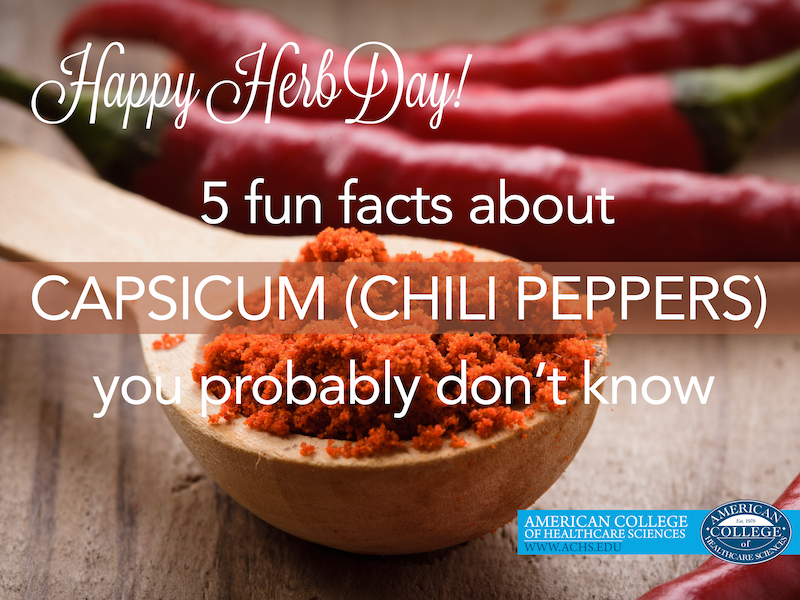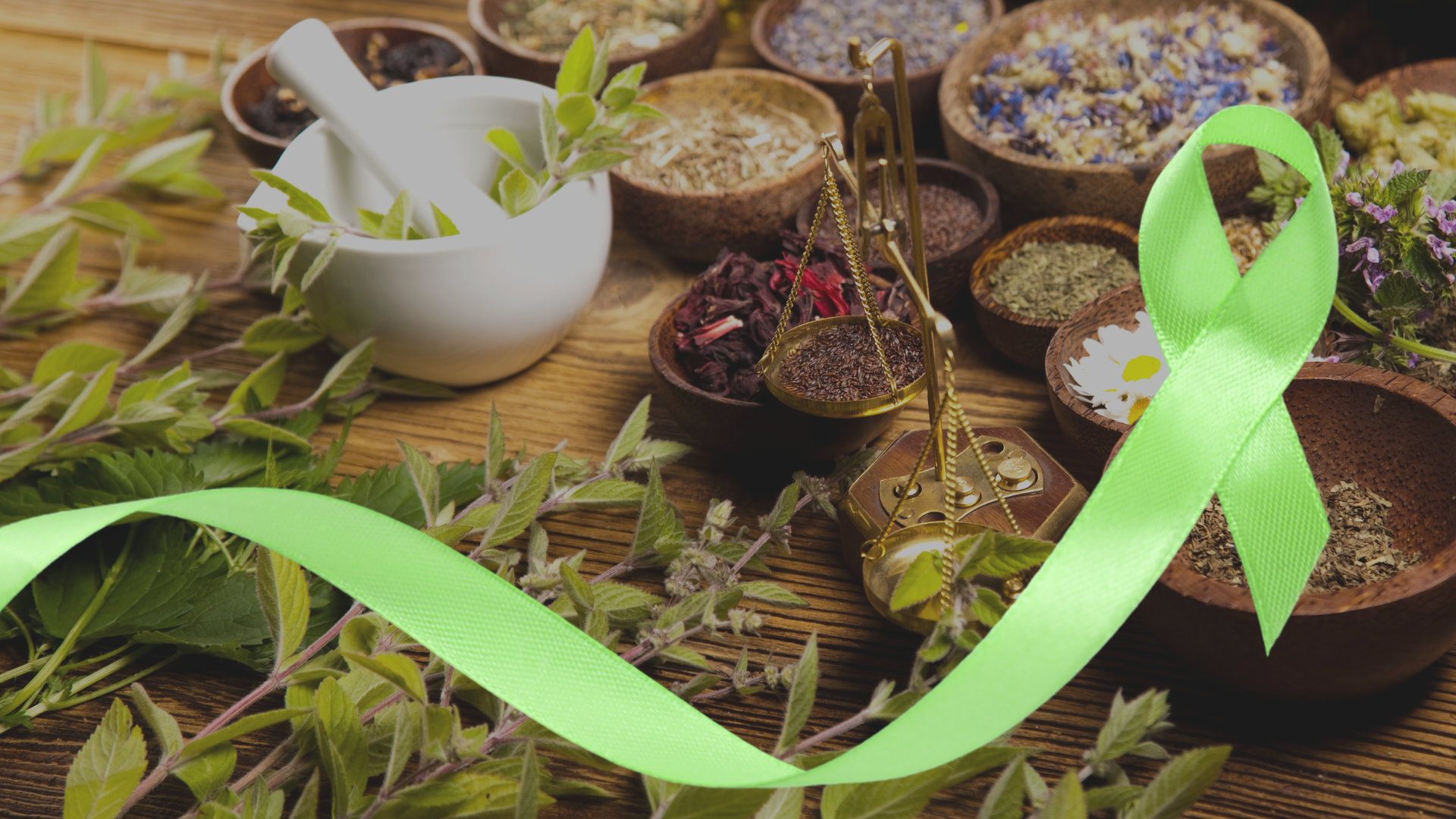Happy HerbDay! May 7 is the 11th annual HerbDay, a day dedicated to celebrating all things herbs and herbal products. HerbDay is aimed at educating and sharing ideas about how these wonderful botanicals enrich our lives and benefit our wellbeing.
Since the International Herb Association has named chili peppers Capsicum ssp. Herb of the YearTM for 2016, we thought we would do a little tribute to this fiery botanical to celebrate HerbDay. Here are 5 fun facts about capsicum you probably don’t know!1. Birds are immune to the spice in hot peppers.
Have you ever noticed that a pepper that sets your mouth ablaze with the fire of 10,000 suns seems like a mild snack to our feathered friends? Well, it’s not because birds like to feel the burn. Their receptor cells are simply immune to capsaicin, the alkaloid responsible for the burning sensation humans and other mammals experience when eating chilies.[1]
Some commercial pet food manufactures even add cayenne pepper into bird feed mix as a deterrent to squirrels and cats. So while Tweety can chow down on those habanero seeds, Sylvester better keep away unless he’s ready for a five-alarm fire in his mouth!
2. An American fruit with a Greek name.
While species of capsicum are native to the Americas,[2] the name “Cayenne” is derived from the Greek word, “to bite.” A suitable name, especially for anyone who’s added too many pinches of cayenne to their chili or been on the receiving end of a pepper spray can.
3. Cayenne: Effective relief for aches and pains.
In traditional herbal medicine, cayenne pepper Capsicum annuum (L.) is known as a fabulous analgesic. Topically, capsaicin (that spicy alkaloid!) can soothe normal, everyday aches and pains.[3]
Capsaicin’s topical relief action is thought to stimulate fibers that help the brain release a sensory neurotransmitter that mediates pain. Orally, cayenne C. annuum is said to stimulate the release of endorphins in the brain that function as the body’s natural sedatives. This is also the reason some people love spicy food—a spicy, sweet endorphin kick!
4. Chili peppers are not related to black pepper.
Did you ever wonder why chilies and black peppercorns share a common name, even though they look and taste quite different? The truth is: they are two completely different species.
In the 15th century, Christopher Columbus compared capsicum to black pepper because of the spicy taste, and the name stuck.[4]
Not only are chilies Capsicum spp. unrelated to black pepper Piper nigrum (L.), the alkaloids that make them spicy are also different. Black peppercorns are spicy due to the alkaloid piperine, while hot chili peppers are spicy due to the presence of capsaicin.
5. Chilis provide endurance for politicians.
Recently, presidential hopeful Hillary Clinton shared her secret to good health and campaign endurance: Hot chili peppers. While we’re not about to step anywhere near a discussion on today’s habanero hot political climate, we heartily agree that there’s a connection between capsicum and good health!
Cayenne pepper C. annuum is extremely beneficial to a number of body systems. Along with the wellness benefits mentioned above, it has been said to:
Loving these facts about capsicum? Don't forget the Herb of the YearTM will be released from the IHA this year!
Ready to experience the spicy benefits of chili peppers yourself and celebrate HerbDay 2016? You’ll love this immune support recipe:
Spicy Immune Support
Cayenne Capsicum annuum var. frutescens powder: 1 teaspoon
Slippery elm Ulmus rubra bark (cut) or marshmallow Althaea officinalis root: 1 ounce
Lemon: 1 slice
Honey: 2 tablespoons
Filtered water (boiling): 1 pint
Infuse the herbs in boiling water for 15 minutes. Strain and add lemon and honey. Use one teaspoon as often as necessary. Do not use for children younger than two.
Disclosure of Material Connection: This blog may contain affiliate links. If this blog contains affiliate links, they will be marked with an asterisk. I am disclosing this in accordance with the Federal Trade Commission’s 16 CFR, Part 255: “Guides Concerning the Use of Endorsements and Testimonials in Advertising.”
This article is for informational purposes only. It is not intended to treat, diagnose, cure, or prevent disease. This article has not been reviewed by the FDA. Always consult with your primary care physician or naturopathic doctor before making any significant changes to your health and wellness routine.
References
[1] Vittore, C. (2000, November 22). The straight dope: Are birds immune to hot pepper, enabling them to eat vast amounts and spread the seeds? Retrieved May 7, 2016, from http://www.straightdope.com/columns/read/1857/are-birds-immune-to-hot-pepper-enabling-them-to-eat-vast-amounts-and-spread-the-seeds
[2] Capsicums: Innovative uses of an ancient crop. Retrieved May 7, 2016, from https://www.hort.purdue.edu/newcrop/proceedings1996/V3-479.html
[3] Chrubasik, S., Weiser, T., & Beime, B. (2010). Effectiveness and safety of topical capsaicin cream in the treatment of chronic soft tissue pain. Phytotherapy research : PTR.,24(12), 1877–85. Retrieved from http://www.ncbi.nlm.nih.gov/pubmed/21104944
[4] Armijo. (2013). The story of Chile peppers. Retrieved from http://www.chilepepperinstitute.org/content/files/The%20Story%20of%20Chile%20Peppers.pdf
[5] Hogaboam, C.M. & Wallace, J.L. (1991). Inhibition of platelet aggregation by capsaicin. An effect unrelated to actions on sensory afferent neurons. Eur J Pharmacol., 202:129-31; Wang, J.P., Hsu, M.F., & Teng, C.M. (1984). Antiplatelet effect of capsaicin. Thromb Res., 36:497-507.
[6] Maji, A., & Banerji, P. (2016). Phytochemistry and gastrointestinal benefits of the medicinal spice, capsicum annuum L. (Chilli): A review. Journal of complementary & integrative medicine., 13(2), 97–122. Retrieved from http://www.ncbi.nlm.nih.gov/pubmed/26756096





